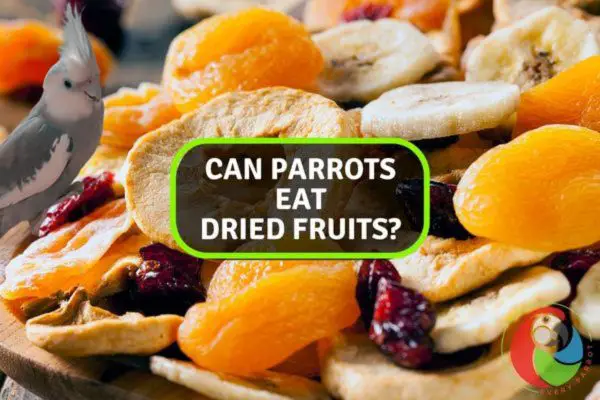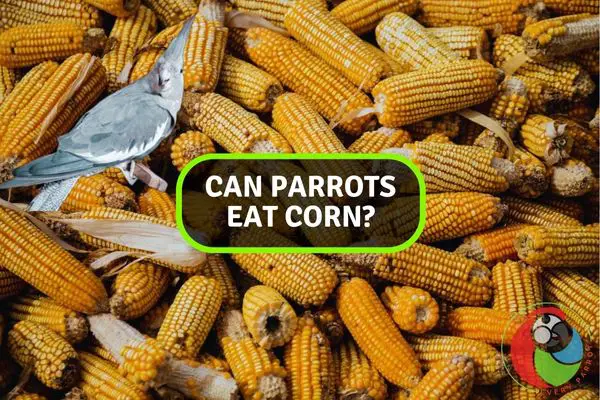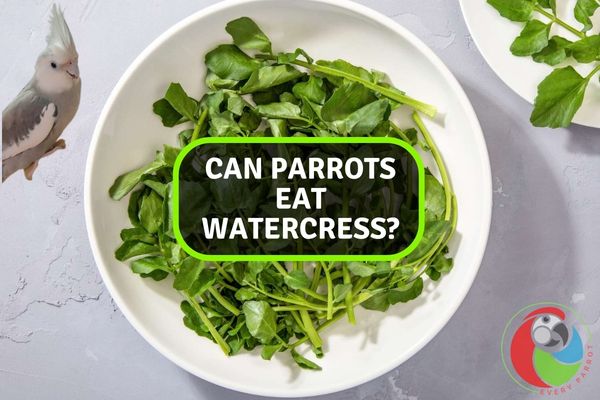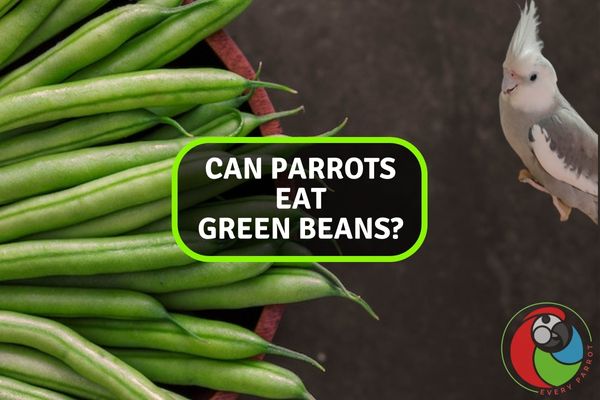Choco-No-Go: Understanding the Perils of Parrots and Chocolate
Chocolate is a beloved treat for humans, but it can be dangerous for our pets. Parrots are no exception. While the sweet taste of chocolate is appealing, it contains substances like theobromine and caffeine that can be toxic to birds.
In this article, we’ll explore whether parrots can safely eat chocolate, how much chocolate is dangerous, and what symptoms of chocolate poisoning owners should watch out for. Chocolate’s appeal is universal, but bird owners need to be aware of the health risks before sharing a bite with their feathery friends. A little knowledge and caution can help keep our parrots safe from harm when we want to indulge in chocolate.
Is Chocolate Toxic to Parrots?
Chocolate contains two substances that can be harmful to parrots – theobromine and caffeine.
Theobromine is structurally similar to caffeine and belongs to a class of molecules called methylxanthines. It is found naturally in the cacao plant, which chocolate is derived from.
Theobromine is toxic to birds. Parrots and other avian species cannot break down and metabolize theobromine efficiently. If ingested, theobromine can accumulate in their bodies and reach toxic levels.
Some effects of theobromine poisoning in parrots include:
- Vomiting
- Diarrhea
- Increased urination
- Restlessness
- Rapid heart rate
- Seizures
- Heart attack
- Death
The amount of theobromine needed to make a parrot sick varies based on the individual bird’s size and sensitivity. Even a couple of bites of chocolate can potentially be dangerous for a parrot.

Types of Chocolate and Toxicity
Not all chocolate is created equal when it comes to theobromine and caffeine levels. The type of chocolate and cacao concentration determines how much of these toxic substances it contains:
- Dark chocolate – Has the highest amounts of theobromine and caffeine because it has higher cacao content (50-90% cacao). Even a small amount of dark chocolate poses a significant risk to parrots.
- Milk chocolate – Contains 10-50% cacao, so lower theobromine/caffeine levels than dark chocolate. Still toxic to parrots in small quantities though.
- White chocolate – Contains no cocoa solids, only cocoa butter. But since it is derived from cocoa beans, may have trace theobromine. Considered the “safest” chocolate option for birds, but still not recommended.
- Cocoa powder – Very high in theobromine and caffeine. Highly toxic to parrots, even in tiny amounts.
Why Shouldn’t Parrots Eat Chocolate? Unveiling the Health Risks
Consuming chocolate can put parrots at risk for potentially life-threatening health issues:
Digestive Problems
The high fat content in chocolate in combination with theobromine makes for a gastrointestinal nightmare in birds. Diarrhea and vomiting are common side effects.
Cardiac Issues
The stimulant effects of theobromine and caffeine raise a parrot’s heart rate and blood pressure. This can trigger cardiac arrest, arrhythmias, and heart attacks, especially in older birds.
Seizures
The toxic compounds in chocolate act as neurostimulants. In large enough doses, this can induce seizures by overexciting the nervous system. Seizures may lead to further injury or death.
Liver Damage
Theobromine causes cellular damage and cell death in parrot livers. This can lead to necrosis, scarring, and liver failure over time.
Kidney Failure
The kidneys are responsible for filtering toxins out of the bloodstream. Theobromine and its byproducts crystalize in urine and can cause kidney stones, blockages, and deterioration of kidney function.
Death
Depending on the amount eaten and the type of chocolate, ingestion can be rapidly fatal for a parrot. Signs of theobromine poisoning progress quickly, and death can occur in under 24 hours.
Safer Bird-Friendly Treat Alternatives
While chocolate should clearly be avoided, there are many healthier human foods parrots can eat in moderation:
- Fresh fruits like apple slices, oranges, melon
- Vegetables like cooked sweet potato, carrots, peas, sprouts
- Whole grain pasta, brown rice, cooked beans
- Small pieces of lean meat like chicken or turkey
- Low-fat nuts and seeds
Carob as a Safe Chocolate Alternative
Carob is often suggested as a bird-safe substitute for chocolate. But what exactly is carob, and why is it not toxic to parrots?
Can Parrots Eat Carob?
Yes, parrots can safely eat carob. Carob comes from the dried pods of the carob tree. It is sometimes processed into a powder or chips that can mimic chocolate in flavor and texture. Nevertheless, carob contains none of the harmful compounds found in chocolate.

Why Isn’t Carob Toxic?
Carob naturally lacks caffeine and theobromine, the two primary substances in chocolate that are toxic to birds. The carob tree does not produce these stimulant compounds. This makes all forms of carob safe for parrots to consume.
Does Carob Contain Caffeine?
There is absolutely no caffeine in carob products. You do not have to worry about any subtle amounts being present as you would even with white chocolate. Caffeine and theobromine never naturally occur in carob trees.
What’s the Difference Between Chocolate and Carob?
While carob can substitute for chocolate in recipes or treats, they have some distinct differences:
- Carob has no caffeine or theobromine, making it completely parrot-safe.
- Carob powder is naturally sweeter with some vanilla undertones, requiring less added sugar.
- Carob has fewer calories per ounce and contains less fat than chocolate.
- The flavor profile of carob is somewhat different from chocolate, though still enjoyable.
- Carob is digested differently and does not cause spike and crash energy patterns like chocolate.
Both are derived from bean pods, but the carob tree and cocoa tree are biologically unrelated. Overall, carob makes a much safer snack.
Benefits of Feeding Carob to Parrots
When fed occasionally in moderation, carob can provide some nutritional benefits for parrots:
- Carob is relatively high in calcium to support bone health.
- It contains antioxidants like polyphenols that combat cell damage.
- Carob has vitamin E to promote immune function and skin health.
- It provides small amounts of magnesium, potassium, and B vitamins.
While not a complete source of nutrition, carob can add some beneficial nutrients. Just don’t overdo it!

Ways to Serve Carob to Your Parrot
There are endless ways to incorporate bird-safe carob into your parrot’s diet:
- Carob chips – Offer a few as finger food treats.
- Carob powder – Lightly sprinkle on fruit slices, veggies, or nutritious chops.
- Carob blocks – Provide large pieces for gnawing and foraging enrichment.
- Carob nut butter – Spread thinly on bread, crackers, or vegetables.
- Carob treats – Replace chocolate with carob in homemade birdie bread, muffins, or other baked goods.
Conclusion
Parrots and chocolate simply do not mix well. The theobromine and caffeine found in all types of chocolate, even dark chocolate, are toxic substances for birds. Eating just a few ounces of chocolate can cause dangerous symptoms in parrots, including vomiting, diarrhea, seizures, arrhythmia, and even death. While chocolate may look like a tasty treat to our pet parrots, it should be avoided completely and not left anywhere a clever bird can access it.
Carob, however, provides a non-toxic alternative that mimics chocolate’s taste and texture. In moderation, carob can be a safe occasional treat to provide nutrition and enrichment. Always check ingredients thoroughly and supervise your feathered friend.








